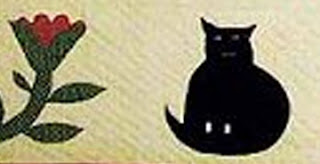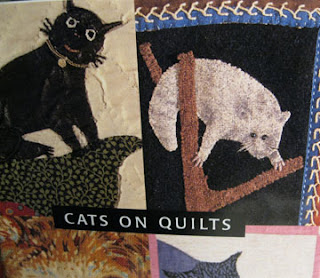Block #1
Reunion
by Barbara
Here's the first block in the nine-month block of the month
I'm doing this year with Moda called Northern Lily, Southern Rose.
I moved my star down a bit to show the fabric with the words "Union".
Susan Stiff designed it with me and made the model.
She fussy-cut the word Union for the star.
We both used prints from my current Moda Civil War reproduction collection called Civil War Reunion.
There's no green in that collection so we used a Moda Bella Solid. Susan appliqued hers to a tan print from CW Reunion. I used a monochrome toile-style print from my scrapbag.
Ilyse Moore is making the blocks at 8" and using an updated dusty pink and olive combination.
I chose a federal shield as the central block because I've seen many quilts from the 1860s with that image.
1850-1880
Here are a few antique samplers from online auctions
featuring a shield among other patriotic symbols and a lot of florals.
1870-1900
1850-1870
See the quilt that inspired the Reunion shield at the Quilt Index.org
It is a New Jersey sampler, inscribed in the center, "Presented to Reverend Mr. and Mrs. D.B. Stout by the ladies of Leedsville Dec. 1867." Reverend Stout was pastor of the Middletown Baptist Church from 1837 to 1875.
http://www.quiltindex.org/fulldisplay.php?kid=4A-7F-55D
Another sampler with a shield, this one from New London, Connecticut
http://www.quiltindex.org/fulldisplay.php?kid=47-7B-2F8
Ask your quilt shop if they are carrying Northern Lily, Southern Rose this year.
And for inspiration a few more shields from vintage folk art and popular culture.
Three stars on this Memorial Day postcard
Diagonal stripes
Spatterware
Stripes going horizontally and vertically in this ink drawing.

























































